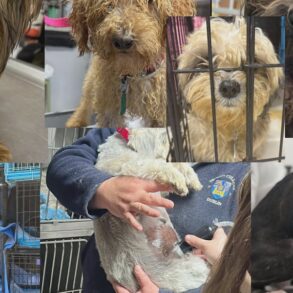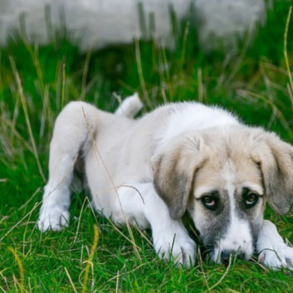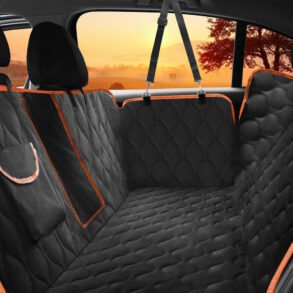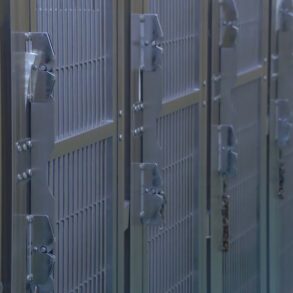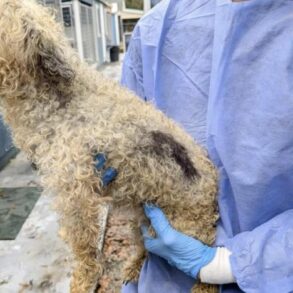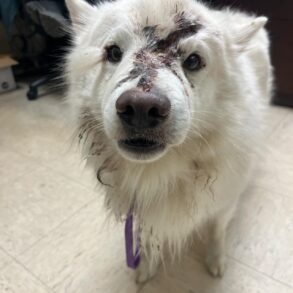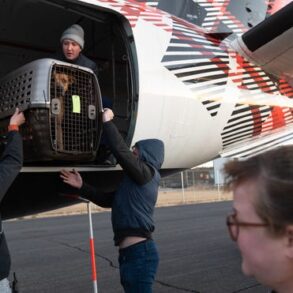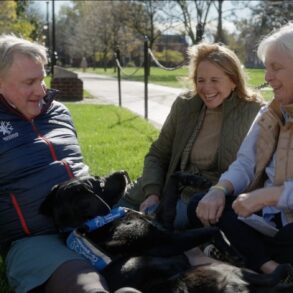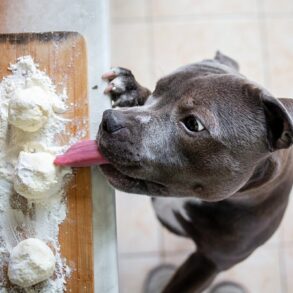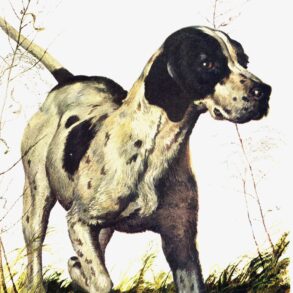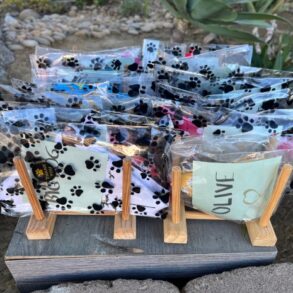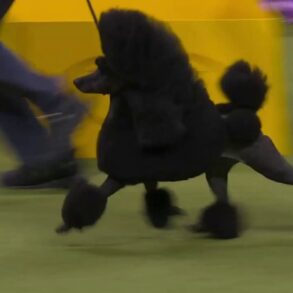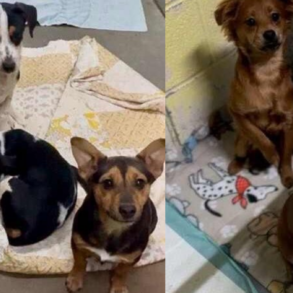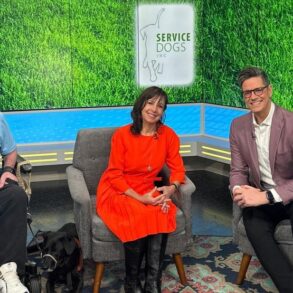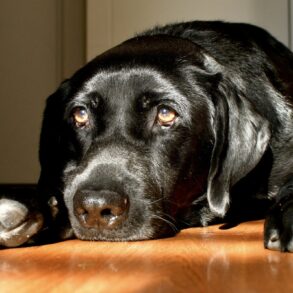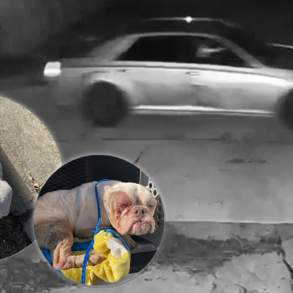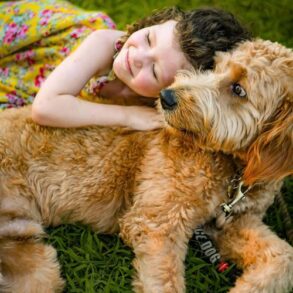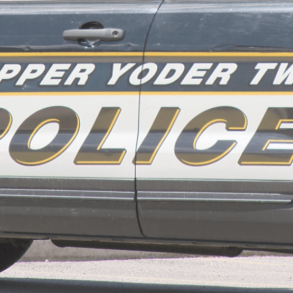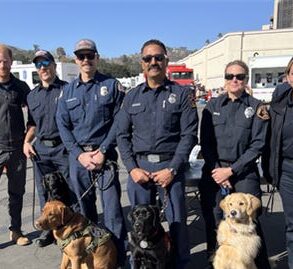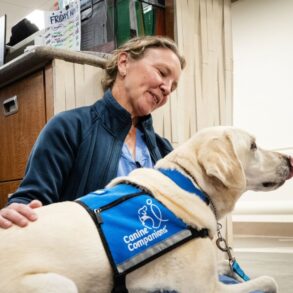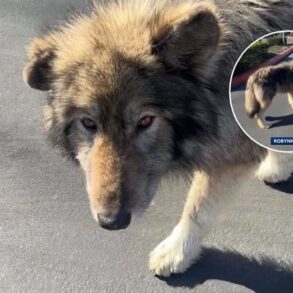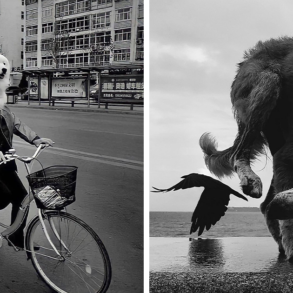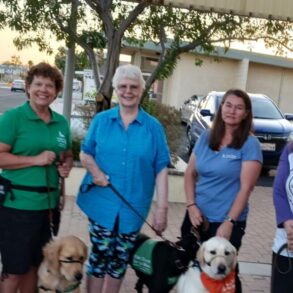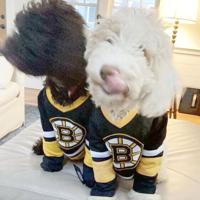Everyone has seen — or lives with — that one dog who’s obsessed with a certain toy. There’s this dogopens in a new tab who’s eagerly waiting for his stuffed tiger to be washed, this dogopens in a new tab who can’t believe it’s taking so long for her carrot plushie to be fixed, and this dogopens in a new tab who might actually believe Lamb Chop is his child.
Thankfully, a dog imprinting on a toy can be a “very healthy behavior,” says Dr. Adam Christmanopens in a new tab, chief veterinary officer for dvm360, who’s based in New Jersey. “It’s a lot of paternal and maternal response to something that they have a deep attachment to,” he says.
Dr. Christman is also a very devoted Dachshund dadopens in a new tab whose home is basically a sanctuary for toys. His four dogs — Carl, Capone, Connor, and Clark W. Griswold — happen to live there, too.
“I mean, it looks like MTV Cribs for Dachshunds,” he says.
The majority of his dogs love Lamb Chop, but Clark W. Griswold (named after Chevy Chase’s character in National Lampoon’s Vacation movies) has his own favorite special toy that he carries everywhere. The toy is so mangled that it is, apparently, beyond description, and Clark’s attraction to it is a mystery.
“It almost looks like a person, but we call it ‘his amoeba,’ and he has to take it to bed with him at night,” Dr. Christman says. “It has been washed. We have put it in the dryer, and, you know, Grandma has stitched it back together again. And there have been panic attacks [when we’ve lost it.]”
Dr. Christman likens it to the feeling that a kid might get when they bond with their toy. “It gives them that calm,” he says. “It helps minimize fear, anxiety, and stress.”
How do dogs choose “the one”?
While it might be unclear exactly why Clark the Dachshund chose to bond with a “very weird-shaped toy,” as Dr. Christman puts it, it’s obvious that he finds something soothing in his selection.
A toy might simply be a source of comfort and support because of positive associations, says Diane Kasperowicz, a dog trainer and canine behavior consultant at Super Houndsopens in a new tab in the U.K. “If a toy or blanket was introduced during a sensitive developmental stageopens in a new tab, that toy may become an emotional anchor for the dog,” since a positive association was formed when the toy was introduced, Kasperowicz says. This can often happen when your dog’s a puppy, and they may find emotional comfort and support from the smell or texture.
Dr. Christman notes that a dog’s favorite “toy” might not even be a toy. “They have their own individual personalities,” he says, and that means for some of them, a traditional toy might not be their go-to. It could also be a blanket, a pillow, a dog bed, or something else. “There’s something that is just their own — like, ‘Listen, everything else is negotiable, but this is not.’”
Dogs have instinctual drives that can also influence which toys they prefer, Kasperowicz adds. For example, dogs with traditionally high prey drives might prefer squeaky, fluffy toys, while dogs whose ancestors were bred for herding might like toys they can chase or corral.
Size or breed may also factor in. “Smaller breeds, like Chihuahuas, often choose smaller, soft toys to nestle with in their beds when they go to sleep,” Kasperowicz says. Choosing “the one” is all part of their enrichment, Dr. Christman explains: “We want to encourage them to experience and smell different toys and interactions and puzzle toys. But there is that ‘one’ that they have that deep connection to.”
Why do certain toys become trends?
While many dogs have a unique pick for “the one,” sometimes it seems like everyone has the same favorite. Dr. Christman was in a Home Goods recently when he saw a woman stocking Lamb Chopsopens in a new tab — the stuffed toys that dogs are absolutely obsessed with. He recounts their interaction: “She goes, ‘Oh my god, I can’t keep these in stock.’ And she’s like, ‘Look at all the other options that they have. Why is it the Lamb Chop?’ I said, ‘Because the dogs have spoken.’”
He thinks the attraction is a combination of texture, size, and sound. “The texture is very nurturing to them,” he explains. “It has a maternal feeling … Carl makes biscuitsopens in a new tab off [of Lamb Chop], like he thinks he’s a cat. And it’s got that honking sound, so it gets the head tilts going.”
It’s also possible that a pet parent’s excitement about the toy could help their dog to love it more. Dr. Christman admits that in his house, Lamb Chops keep popping up “like Gremlins.” The little lamb stuffie, originally created as a puppet by children’s entertainer, puppeteer, and ventriloquist Shari Lewis opens in a new tabfor the TV show Captain Kangaroo in 1956, has spanned several generations with its popularity and notoriety.
“I think [Lamb Chop] brings back nostalgia from all of us pet owners,” he says. “And although our dogs may not know it, we know it, and it makes us feel good that they love such a nostalgic toy .… I was at our local mall here, and they were doing pet photos with Santa, and I’m like, ‘Oh, look how they’re getting the head tilts!’ Guess [what toy] they were using?”
Is having a favorite toy healthy for your dog?
Mostly, a dog’s obsession with a favorite toy — whether it’s an ‘amoeba,’ Lamb Chop, or anything in between — is all fine and good. “It’s normal for dogs to have a favorite toy,” Kasperowicz says, “but occasionally it may be a signal that there is an underlying issue.”
One problem could be if they become fixated on the toy and refuse to engage in other activities. “Repetitive or compulsive behaviors related to the toy, such as obsessive licking, chewing, or carrying it around everywhere, could be signs of underlying stressopens in a new tab, anxiety, or boredom,” she explains. “The toy may serve as a coping mechanism for separation-related issuesopens in a new tab.”
In that case, you should have a conversation with your vet about how to handle it. “ OCD is a thingopens in a new tab, so if your dog cannot do his normal quality of life, the day-to-day activities without it, then it raises a little bit of an alarm,” Dr. Christman says, but he notes that this is rare.
For example, if your dog needs to take their toy on every single walk, it’s perfectly fine. “But if they are so obsessed with it [that] it’s interfering with eating opens in a new tabor going to the bathroom and doing the things that they should do, then it can turn into an unwanted behavior where you might have to do a redirect,” he says.
Dr. Christman notes, though, that more often than not, an attachment to a toy can be a positive thing — and pet parents can use it as a reward in stressful situations. He says “great hack” is to secretly bring your dog’s favorite toy with them to vet appointments.
“Pick out a toy that they love —aka, ‘a baby,’ you know— and don’t let them know you have it,” Christman says. “Put it in your purse, put it in a bag, bring it to the front desk. Like, we’ve done things where we go around to hide it so the dog doesn’t know we have it. And then after the exam, we reward them with it, and they give you this look like, ‘How did you know?!’”
Some dogs arrive at the vet with their favorite toy in their mouth, and Dr. Christman will do the entire exam like that; the toy soothes them and helps them feel at ease, he says.
Toys can also help build your bond
Adorably, a toy doesn’t only calm your pup, but it can strengthen your bond too. Sure, your dog might not know that your favorite team is the Mets and that they’re currently holding a Mets plushie in their mouth, but you do—and like putting a baby in a onesie with your favorite band on it, there’s an emotional connection forming there.
“Like, [our dogs] clearly don’t know the difference,” Christman says, “but it gives us joy and comfort that they pick something that we also like, and you share this common bond with them. My dogs love Star Wars, and I loved Star Wars as a kid growing up, so it brings back that joy.”
And interestingly, the way you introduce or react to a toy could matter, too.
“Some dogs will also form an attachment with a specific toy or item of clothing or human item because they are rewarded when they show any interest,” Kasperowicz says. “Engagement with their human can be intrinsically reinforcing for the dog.”
What to do if your dog’s favorite toy gets dirty or torn
But what if your dog’s favorite toy gets damaged—or dirty—and they look absolutely wrecked while you have to make it better?
“I’m telling you, dogs understand. They get it,” Christman says. His mom —aka Grandma to the Dachshunds— regularly comes over to sew their toys back up, and they sit patiently to wait until she’s done.
“This is part of Grandma’s relationship with the kids,” he says. “This is why they’re so bonded to her; she gets her sewing kit, and they see it. They sit like little gentlemen, and they watch her, and then they wait, and she goes, ‘OK, all done.’ And then they take it and they go play. If you talk to them, they will understand that everything’s gonna be OK.”
It’s all the more reason to be proactive, too, and make sure you have a backup, just in case a toy is permanently lost or discontinued. (Not that there seems to be any danger of that with Lamb Chop, in particular.)
How to pick the perfect toy for your pup
If you’re trying to pick the perfect toy — in hopes that it might be “the one” — there are some things to consider. Don’t choose just any color, as dogs can make out some colors more vividlyopens in a new tab, Kasperowicz says.
“Toys in blue and yellow are easier for them to see, so choosing a toy with vibrant contrasting colors may be more fun for the dog,” she explains. “Also consider textures when selecting a toy — squeaky toys and crinkly, crackly toys may be preferable for some dogs, and toys with hidden treats or removable items may keep the dog engaged.”
She notes that puppies might like softer, plush toys, while adult pups could need something more durable; she recommends interactive toys to engage them mentally, too. Senior dogs may prefer plush, lightweight toys that they can easily carry around. At the end of the day, your dog’s bond with their favorite toy is an important one—and every dog deserves to have a favorite (or lots of favorites).
“Their lives are too short, and you want to make every day their best day ever,” Dr. Christman says. “And if it’s a toy that’s a few bucks, and it puts a smile on everybody’s faces, I call it a home run.”
This post was originally published on this site be sure to check out more of their content.





